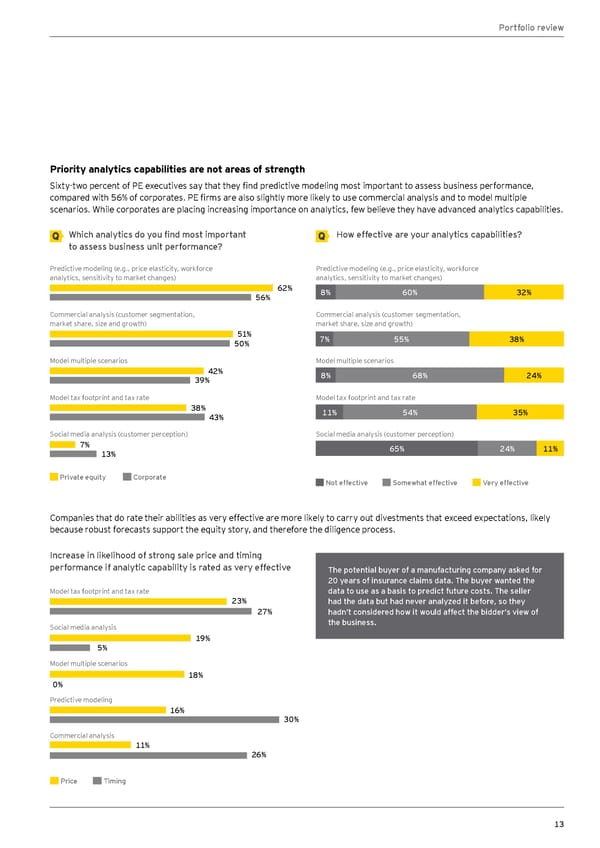Portfolio review Priority analytics capabilities are not areas of strength Sixty-two percent of PE executives say that they find predictive modeling most important to assess business performance, compared with 56% of corporates. PE firms are also slightly more likely to use commercial analysis and to model multiple scenarios. While corporates are placing increasing importance on analytics, few believe they have advanced analytics capabilities. Which analytics do you find most important How effective are your analytics capabilities? to assess business unit performance? Predictive modeling (e.g., price elasticity, workforce Predictive modeling (e.g., price elasticity, workforce analytics, sensitivity to market changes) analytics, sensitivity to market changes) 62% 8% 60% 32% 56% Commercial analysis (customer segmentation, Commercial analysis (customer segmentation, market share, size and growth) market share, size and growth) 51% 7% 55% 38% 50% Model multiple scenarios Model multiple scenarios 42% 8% 68% 24% 39% Model tax footprint and tax rate Model tax footprint and tax rate 38% 11% 54% 35% 43% Social media analysis (customer perception) Social media analysis (customer perception) 7% 65% 24% 11% 13% Private equity Corporate Not effective Somewhat effective Very effective Companies that do rate their abilities as very effective are more likely to carry out divestments that exceed expectations, likely because robust forecasts support the equity story, and therefore the diligence process. Increase in likelihood of strong sale price and timing performance if analytic capability is rated as very effective The potential buyer of a manufacturing company asked for 20 years of insurance claims data. The buyer wanted the Model tax footprint and tax rate data to use as a basis to predict future costs. The seller 23% had the data but had never analyzed it before, so they 27% hadn’t considered how it would affect the bidder’s view of Social media analysis the business. 19% 5% Model multiple scenarios 18% 0% Predictive modeling 16% 30% Commercial analysis 11% 26% Price Timing 13
 Global Corporate Divestment Study Page 12 Page 14
Global Corporate Divestment Study Page 12 Page 14